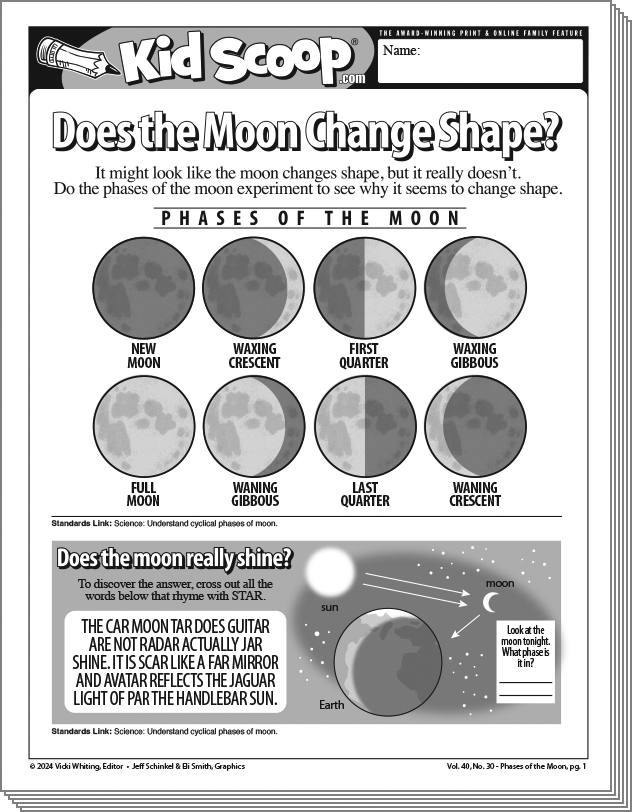 Our nearest celestial neighbor is a wonder to watch. The moon appears to change shape and moonshine each month, but it never actually changes size! Why does the moon look like a bright flashlight some nights, crescents on other nights, or a dark ball with no light at all? Neither flashlight, nor crescent, nor ball, the moon is like a mirror bouncing sunlight off its surface as it orbits the earth. Your budding astronomer can replicate this changing phases phenomenon at home with an apple, a pencil, a flashlight, and a partner. Learn the science behind the phases, some legends from ancient cultures, and what you might bring for a trip to the moon. If it were really made of cheese, what might you have to say about that? Blastoff and learn more!
Our nearest celestial neighbor is a wonder to watch. The moon appears to change shape and moonshine each month, but it never actually changes size! Why does the moon look like a bright flashlight some nights, crescents on other nights, or a dark ball with no light at all? Neither flashlight, nor crescent, nor ball, the moon is like a mirror bouncing sunlight off its surface as it orbits the earth. Your budding astronomer can replicate this changing phases phenomenon at home with an apple, a pencil, a flashlight, and a partner. Learn the science behind the phases, some legends from ancient cultures, and what you might bring for a trip to the moon. If it were really made of cheese, what might you have to say about that? Blastoff and learn more!
In this issue students will:
- read informational text about moon phases
- learn the difference between waxing and waning
- conduct a simple science experiment
- read closely to edit a moon passage
- use the newspaper to create a packing list for your space launch
- create a “cheesy” moon legend
- read about scientific advancements in your local newspaper
7 page PDF
